- Books Name
- CBSE Class 7 Social Science Book
- Publication
- Param Publication
- Course
- CBSE Class 7
- Subject
- Social Science
Abstract of the Chapter
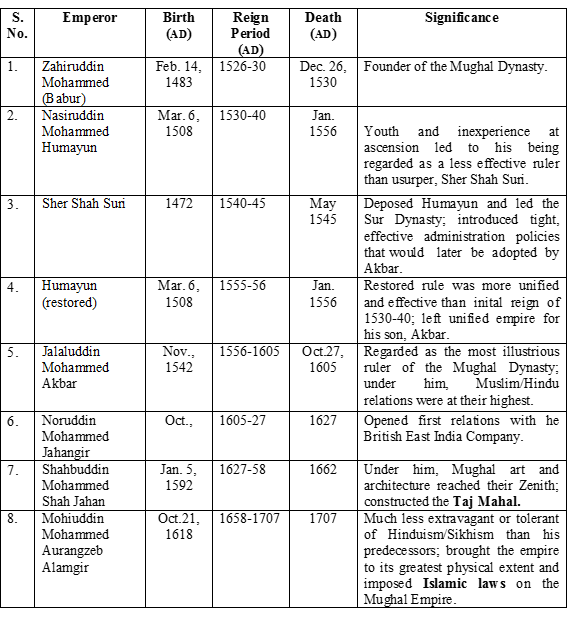
* Introduction 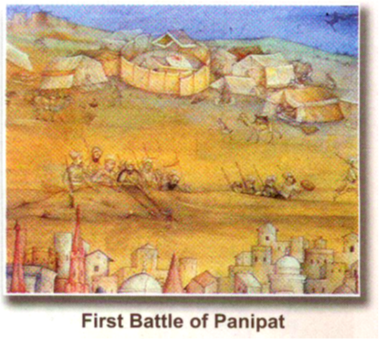
Babur Invaded India in 1526 and established a dynasty called the Mughal Dynasty, which lasted for about 300 years. It was called the Mughal Dynasty because of their Mongol ancestry. On the eve of Babur’s, the political condition of India was very deplorable. The decline of the power of the Sultanate led to the rise of a number of new kingdoms in various parts of the country. The important regional kingdoms were Bengal, Assam, Orissa, Jaunpur, Gujarat, Malwa, Mewar, Kashmir etc. These kingdoms always quarrelled among themselves.
* BABUR (1526-30) 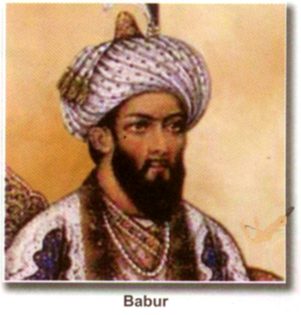
He was a descendent of Timur and Chenghiz Khan. At the age of eleven he became the ruler of Farghana, his birthplace and a small kingdom in Central Asia (now in modern Uzbekistan and Tajikistan).
In 1526, the First Battle of Panipat was fought between Ibrahim Lodi and Babur at Panipat which is about 100 kms from Delhi. Even though Ibrahim Lodi’s army was larger, Babur won the war.
* Due to a number of reasons
1. He had excellent generals and he himself was a very capable military leader.
2. He had a well-trained cavalry (remember the Mongols were skilled horsemen).
3. His artillery used firearms which Ibrahim Lodi’s army was not familiar with.
4. His army though small was well organized and disciplined.
Ibrahim Lodi was killed by Babur who occupied Delhi and Agra and became the emperor of India.
This resulted in Rana Sangha of Mewar and many Afghan nobles turning against him because even though they had invited him to India they had not expected him to stay.
* Battle of Khanwa
A year later Babur fought the Battle of Khanwa against Rana Sangha and defeated him. Later he conquered Gwalior. Dholpur and other places. He became the ruler of Punjab. Delhi, the Ganga plains and Bengal.
* Death of Babur
Unfortunately after four years of rule he died in 1530. He was buried in a beautiful garden in Kabul.
Babur was the founder of the Mughal Empire in India, which for nearly three centuries provided a sense of continuity and unity to the people.
He was an able GENERAL, a POET, a WRITER and a NATURE lover. He loved setting up gardens or baghs.
He was well-versed in both the Turkish and Persian languages.
His autobiography Tuzuk-i-Baburi is beautifully written. It was the first real autobiography in Islamic literature in India.
* HUMAYUN (1530-40, 55)
Babur’s son, Humayun, succeeded him and inherited a large empire. In the four years that Babur had ruled, he had been unable to consolidate his empire and nor was he able to establish an efficient administration. His finances were also low.
Consequently. Humayun had to face a lot of problems in the following shapes: 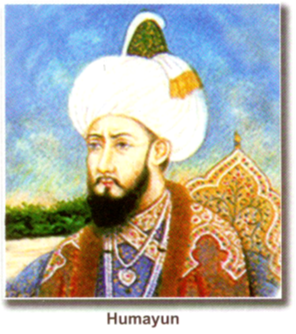
1. The Afghan and Rajput nobles were hostile to the Mughals as they considered them foreigners.
2. He treated his brothers well for he had promised his father to do so on his deathbed. Unfortunately, his brothers were ambitious and disloyal to him and they created problems for him.
3. In western India, Bahadur Shah, the ruler of Gujarat was threatening to invade Delhi.
4. In Eastern India, Sher Shah, an ambitious Afghan ruler became powerful and posed a threat to Delhi.
* AKBAR (1556-1605)
Akbar was 13 years old when he became emperor, His reign can be divided into three periods. 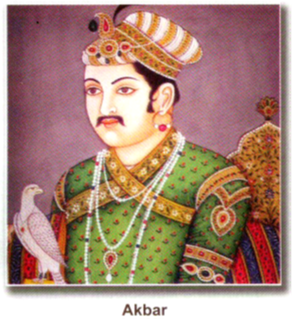
(i) 1556-1570: Akbar became independent of the regent Bairam Khan and other members of his domestic staff. Military campaigns were launched against the Suris and other Afghans, against the neighbouring kingdom of Malwa and Gondwana, and to suppress the revolt of his half-brother Mirza Hakim and the Uzbegs. In 1568 the Sisodiay capital of Chittor was seized and in 1569 Ranthambor.
(ii) 1570-1585: Military campaigns in Gujarat were followed by campaigns in the east in Bihar, Bengal and Orissa. These campaigns were complicated by the 1579-1580 revolt in support of Mirza Hakim.
(iii) 1585-1605: Expansion of Akbar’s empire. Campaigns were launched in the north-west. Qandahar was seized from the Safavids, Kashmir was annexed, as also Kabul, after the death of Mirza Hakim. Campaigns in the Deccan started and Berar, Khandesh and parts of Ahmadnagar were annexed. In the last years of his reign Akbar was distracted by the rebellion of Prince Salim, the future Emperor Jahangir.
* JAHANGIR (1605-1627) 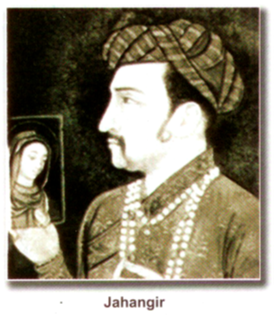
Military campaigns started by Akbar continued the Sisodiay ruler of Mewar, Amar Singh, accepted Mughal service. Less successful campaigns against the Sikhs, the Ahoms and Ahmadnagar followed.
Prince Khurram, the future Emperor Shah Jahan, rebelled in the last years of his reign. The efforts of Nur Jahan, (Jahangir’s wife) to marginalise him were unseccessful.
* SHAH JAHAN (1627-1658) 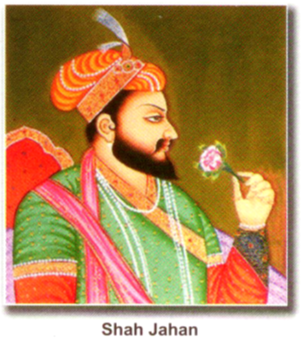
Mughal campaigns continued in the Deccan under Shah Jahan. The Afghan noble Khan Jahan Lodi rebelled and was defeated. In 1632 Ahmadnagar was finally annexed and the Bijapur forces sued for peace. In 1657- 1658, there was conflict over successikon amongst Shah Jahan’s sons. Aurangzeb was victorious and his three brothers, including Dara Shukoh, were killed. Shah Jahan was imprisoned for the rest of his life in Agra.
* AURENGZEB (1658-1707) 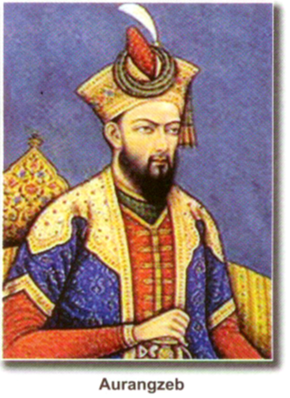
(i) In the north-east, the Ahoms were defeated in 1663, but rebelled again in the 1680s. Campaigns in the north-west against the Yusufzai and the Sikhs were temporarily successful. Mughal intervection in the succession and internal politics of the Rathor Rajputs of Marwar led to their rebellion. Campaigns against the Maratha chieftain Shivaji were initially successful. But Aurangzeb insulted Shivaji who escaped from Agra, declared himself an independent king and resumed his campaigns against the Mughals. Prince Akbar rebelled against Aurangzeb and received support from the Marathas and the Deccan Sultanate. He finally fled to Safavid Iran.
(ii) After Akbar’s rebellion Aurangzeb sent armies against the Deccan Sultanates. Bijapur was annexed in 1685 and Golconda in 1687. From 1698 Aurangzeb personally managed campaigns in the Deccan against the Marathas who started guerrilla warfare. Aurangzeb also has to face the rebellion in north India of the Sikhs, Jats and Satnamis, in the north-east of the Ahoms and in the Deccan of the Marathas. His death was followed by a succession conflict amongst his sons.
Illustration 1
Name three important literary sources that help to know about Mughal history.
Solution
• Tuzuk-i-Baburi
• Humayunama
• Akbarnama
Illustration 2
Discuss the problems faced by Aurangzeb on ascending the throne.
Solution
Aurangzeb’s long rule had to face several political events like :
• Rise of the Marathas under Shivaji
• The peasant rebellions of the Jats of the Agra-Delhi region.
• Conflict with Sikh Guru Teg Bahadur.
• Revolts by the Rajput rulers.
• Portuguese piracy in the Bay of Bengal.
Illustration 3
“Nurjahan played an important role in Mughal history”. Give two examples to justify the statement.
Solution
Her name appeared on farmans along with the imperial signature. She struck coins and also made land grants.
Illustration 4
How did Sher Shah promote trade and commerce?
Solution
Sher Shah levied customs and made it easier and cheaper to transport goods. He built an excellent network of roads such as the Grand Trunk Road. Roads and highways were very safe. Merchants were treated well. He made sarais. All these greatly helped in the growth of trade and commerce.
* CASE STUDY—AKBAR
Akbar, the son of Humayun, was crowned as the king in 1556 when he was just 13 years old. The crowning ceremony took place at Kalanjur in Punjab.
He was more interested in playing and hunting than in ruling his empire. Since Akbar was a minor king Bairam Khan, acted as his regent. He was a loyal friend and an officer of Humayun. Akbar went on to become one of the greatest rulers of North India.
* Sources of Information
During the reign of Akbar, a great book— Akbarnama of which Ain-i-Akbari is a part, was written by Abul Fazl, who was one of the Navaratnas of Akbar’s royal court.
The Akbarnama, which literally means History of Akbar, is a biographical account of Akbar. It is the most comprehensive history of the reign of Akbar.
Ain-i-Akbari was originally the third volume of the Akbarnama. While Akbarnama is technically a history book, Ain-i-Akbari embodies Ains or rules and regulations framed and put into effect for proper administration by Akbar. It is regarded as an administrative manual and is like a modern gazetteer. Abul Fazl also discusses in this book the social conditions, literary activities, the law and philosophy not only of Muslims but also of Hindus, Jains and other communities. There are, in addition, chapters on distinguished travellers, Muslim saints, and sufis.
The Ain-i-Akbari of Abul Fazl is therefore indispensable in the study of the history of India.
* Consolidation and, Expansion of the Empire
Soon after Akbar came to the throne he had to face Hemu, a general of an Afghan prince who was a descendent of Sher Shah. Hemu had occupied Agra and was marching towards Delhi. In 1556, Bairam Khan fought him at Panipat. In the Second Battle of Panipat, Bairam Khan crushed Hemu and ultimately killed him.
After winning this battle Akbar reoccupied Delhi and Agra. Gwalior, Ajmer and Jaunpur also came under Mughal control.
Akbar then set out to conquer more territories :
(i) In 1561 Akbar conquered Malwa and defeated its king,
(ii) Later Gondwana in Central India was annexed.
(iii) Rajput Policy: Akbar’s policy towards the Rajputs was to win them over by marriage alliances and by befriending them. This he did by granting those honours and high positions in the government. He himself married, Jodha Bai, the princess of Amber. The Rajput states of Amber, Ranthambor, Kalinjar, Bikaner and Jaisalmer made alliances with him, except Rana Pratap of Mewar. This led to a battle between the forces of Mewar and the Mughals and even though the fort of Chittor was captured and the troops of Rana Pratap were defeated at the ‘Battle of Haldi Ghati yet Mewar did not surrender to Mughal control. The Rajput policy of Akbar helped him to secure Delhi and Agra; to expand and consolidate his territories and also to enlist the services of the brave Rajput soldiers. The Rajputs were appointed to important posts in the administration.
(iv) Gujarat was conquered in 1578 and the ports of Gujarat meant more revenue for the kingdom through trade.
(v) Later, Bengal was annexed and its seaports encouraged trade with South East Asia. The rich and fertile land of Bengal brought a lot of revenue for the kingdom.
(vi) Akbar conquered Kabul, Kashmir Qandahar and Baluchistan. This increased trade between India, Persia and Central Asia.
* Map Showing Akbars Empire
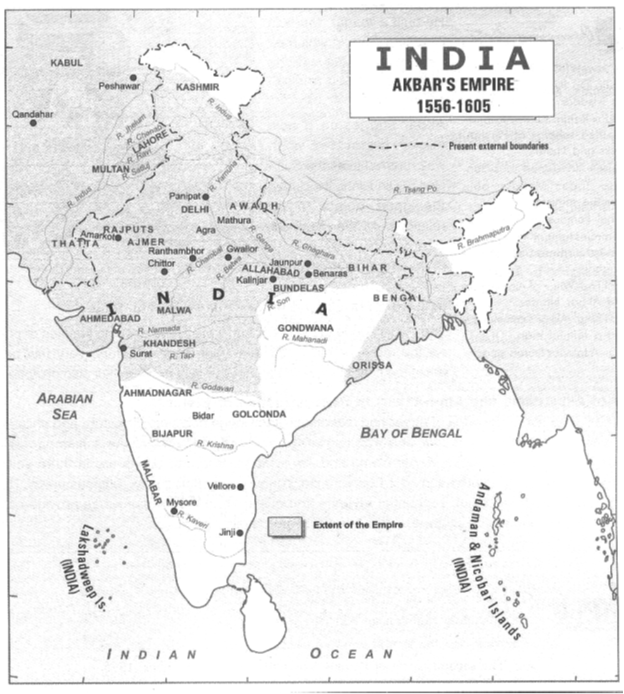
* The Mughal Administration and Key Offices
Central administration. Akbar worked out an efficient system of administration. The emperor was very powerful and supreme. All powers were concentrated in his hands. He interpreted the Islamic law and this led to the decline of the position of the ulemas. The king went on frequent courts of inspection. The system of government was a monarchy.
The emperor ruled with the help of a council of ministers similar to Humayun’s. The ministers were appointed, promoted and removed by him. Some of the different ministers were:
(a) Wazir or the Prime minister. He was also called the Diwan and was the head of the revenue department or two people could separately occupy the offices.
(b) Mir Bakshi was in charge of the military administration.
(c) Qazi was the Chief Justice.
(d) Mir Saman looked after the royal household.
The emperor was accessible to the people and they could meet him with their complaints at the Diwan-i-Aam in the Agra Fort.
Diwan-i-Aam meant the court of the common people and Diwan-i-Khas was the court for nobility and royalty.
His officials and ministers could meet and discuss issues of national importance with him at the Diwan-i-Khas.
* Division of Empire
The empire was divided into provinces or subhas which were fifteen in number.
These were further divided into sarkars, which were further divided into parganas.
Which consisted of many villages. The Subhas were under a subedar who was a provincial Governor and was powerful. He was helped by a number of other officers like the diwan who kept the revenue records, bakshi who looked after the needs of the army and the kotwal who was the officer in charge of the town administration.
(A) Mansabdari System. This system was introduced in Akbar’s army. According to this system:
(a) Every noble or officer was given a mansab or rank. Such a person was called a mansabdar. His rank could vary from 10 to 7000. For example, a panch hazari (5000) mansabdar had to maintain 5000 troops.
(b) A mansabdar had to maintain a fixed number of troops as per his rank and they were to be supplied to the king whenever needed at the time of war.
(c) He was given a handsome amount to take care of his expenses and to maintain the required troops. The amount was generally paid by assigning a jagir, i.e., by granting land and not by paying cash.
(d) Generally a person was appointed at a low rank or mansab and was gradually promoted according to the service he provided.
(e) A mansabdar could be transferred from one place to another to stop him from becoming too powerful. The Mansabdari was also not hereditary.
(B) Revenue System
Revenue formed an important part of the administration. The main sources of income were land revenue and trade. Land revenue was the major source of income for the king. With the help of Raja Todar Mai, Akbar introduced the following measures to generate revenue:
(i) Land was properly measured and assessed.
(ii) Average produce was calculated on the basis of the previous ten years.
(iii) One-third of the revenue was fixed for the state.
(iv) Revenue records were kept up to date.
(v) Needy peasants were given loans by the government.
(vi) In case of drought or floods the land revenue was often cancelled by the king.
* Trade
Trade was another source of income for the king. Gujarat and Bengal had seaports, which encouraged overseas trade.
Goods were traded with Persia, Central Asia, South East Asia and Russia. The main items of export were indigo, textiles, spices and saltpetre.
Trade with Europe also increased at this time and the Portuguese established trade centres in the west coast of India. Through them many Indian products reached the European markets.
Akbar encouraged internal trade through the building of roads and the removal of unnecessary taxes.
* Religious Policy of Akbar
Tolerant Policy. Akbar had a very liberal and tolerant attitude towards people of all religions. He had a secular outlook and believed in the basic unity of all religions. Akbar took various steps, which appealed to the Hindus, who were in the majority among his subjects. These were:
(a) Abolishing of the jizya, a tax paid by non-muslims to a Muslim King.
(b) Hindus, including the Rajput princesses he married, were allowed freedom of worship.
(c) Pilgrimage tax was abolished.
(d) Mansabs were given to deserving Hindus. Todar Mai, Man Singh and Birbal who were Hindus, held important positions in his court.
(e) No discrimination was made on the basis of religion for employment.
* IBADAT KHANA 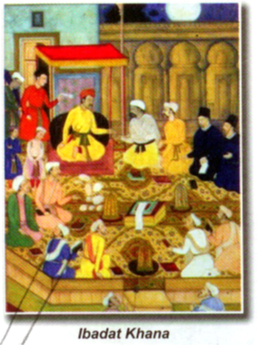
The hall of prayer, i.e., Ibadat Khana, was built by Akbar at Fatehpur Sikri. Here he encouraged preachers and saints from different religions like Hinduism. Parsis, and Christians, etc., to hold discussions with him. Consequently this helped Akbar to know and form an idea of other religions and he realized that all religions had a basic unity. He went on to combine and form a new order emphasizing the basic ideas of all religions.
* DIN-I-ILLAHI
This was a new order, introduced by Akbar and it consisted of the basic ideas of all religions. Din-i-Ilahi encouraged peace, unity and tolerance. Membership into it was not compulsory and its members had to follow certain rules like not eating meat during some months giving up personal property, etc. This new order had no priests, places of worship or sacred books. The sun, light and fire were worshipped.
Din-i-Ilahi died out with Akbar. However, his policy of religious tolerance set an example for many statesmen of the world today.
* Architecture
His new capital was built near Agra at Fatehpur Sikri. It was built of red sand stone. Some fine buildings worth mentioning are Rani Jodhabai’s Palace. Panch Mahal, Rang Mahal, Diwan-i-Khas, etc. The architecture was a blend of Indian, Central Asian and Persian styles. The Buland Darwaza at Fatehpur Sikri was added to commemorate Akbar’s victory over Gujarat. It is the highest gateway in India and one of the biggest in the world.
Why did Akbar choose Fatehpur Sikri as his capital ?
It was chosen by him because it was the birthplace of Salim Chisti, a Sufi saint for whom Akbar had a great respect. The mausoleum over the tomb of Salim Chisti is made of marble and has beautiful mother of pearl and ebony inlay work on it. People from all over visit the tomb, which also has a lot of marble lattice.
Another example of architecture of this period is Humayun’s Tomb, at New Delhi. It is on a raised platform and has many domes and arches. It was enclosed in a garden and has a big gateway. The well-laid garden and the massive gateway seem to be common to most Mughal tombs. SIKANDRA, Akbar’s tomb near Agra, which was started by .Akbar himself, was a huge structure without a dome.
The Mughal type of architecture also influenced temple architecture. An example of this is the Govind Dev Temple at Vrindavan. The Govind Dev Temple is made of red sandstone and shows a distinct mixture of two styles.
* Literature and Music
Though Akbar was illiterate, he was a great patron of learning and encouraged it. He had a sharp memory and was good at learning and often had books read to him. Due to his enthusiasm, he had many talented men at his court. Land grants were given to them to encourage them further.
Akbar’s court was famous for its nine gems or Navratnas. Some of them were TODAR MAL, BIRBAL, TANSEN, ABUL FAZL, Raja Man Singh. Todar Mal helped Akbar in the revenue system of India, Birbal was in own for his wit and humour, Tansen contribution to Hindustani Music is well known. He composed Rag darbari in honour of Akbar. Abul Fazl wrote the famous Akbarnama, a biography of Akbar. Faizi, a Persian scholar translated the Ramayana and part of the Mahabharata into Persian. Raja Man Singh was Akbar’s adviser and a competent general.
Some well-known Hindu poets of this period were Tulsidas, Surdas and Keshavdas. Tulsidas wrote the Ramacharita Manasa, which deals with the life of Lord Rama. Surdas was the blind bard from Agra.
Though Persian was the official language, regional languages were also encouraged.
Paper came to India at this time. This encouraged scholars to write. During Akbar’s time books were written by hand as the printing press was yet to be invented.
It is said that Akbar’s library had a good collection of books even though he himself was illiterate.
* Social Reforms
Akbar made an effort to do away with social evils like sati, child marriage, etc. He restricted the selling of liquor.
Keeping the above points in a view, it can be concluded that under Akbar, architecture, literature, music, and trade progressed. At the same time there was a fusion of Indian, Persian and Central Asian styles. He was truly a national king who not only had a vast empire but was also concerned about the welfare of the people.
Inspite of all these achievements Akbar died an unhappy man in 1605. His two sons Murad and Daniyal died from excessive drinking. Prince Salim revolted against him and was later declared his successor.
GLOSSARY
Regent : A person who rules a country on behalf of the king or queen.
Sarais : Rest houses
Rupia : A new coin introduced by Sher Shah
Jahangir : Conqueror of the world
Khalsa : Literal interpretation means pure
Diwan-i-Aam : Hall of public audience
Diwan-i-Khas : Hall of private audience, where Akbar held private meetings with his officials.
Wazir : Prime Minister or Diwan
Sarkar : District; a suba divided into sarkars
Paragana : An administrative division of sarkar
Kotwal : Officer in charge of law and order
Mansabdar : The holder of a rank (mansab).
Khutba : An Arabic term referring to the Islamic Sermon
Illustration-1
What were the main features of the Mughal Court?
Solution :
Stringent rules were framed to be followed in the courts. The ruler was considered a representative of God on the Earth. Ministers had fixed seats. The rulers took special care to be approachable to the common man.
Illustration-2
“Akbar was known for his secular outlook”. Do you agree? Explain why his religious policy was unique.
Solution :
Akbar’s secular and tolerant religions policies are well known. He invited scholars from all religions and held discussions with them in the Ibadat Khana. He developed the policy of Sulh-i-Kul meaning universal peace. He promulgated Din-i-Ilahi that included the good points of all religions. He believed in all religions and was tolerant towards all religions.

 Param Publication
Param Publication
